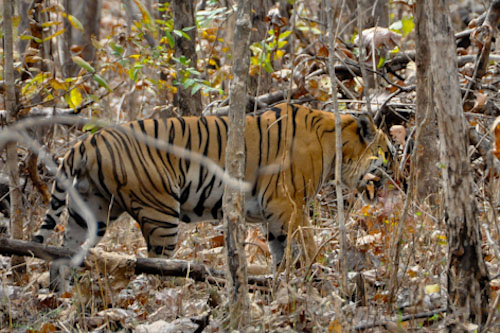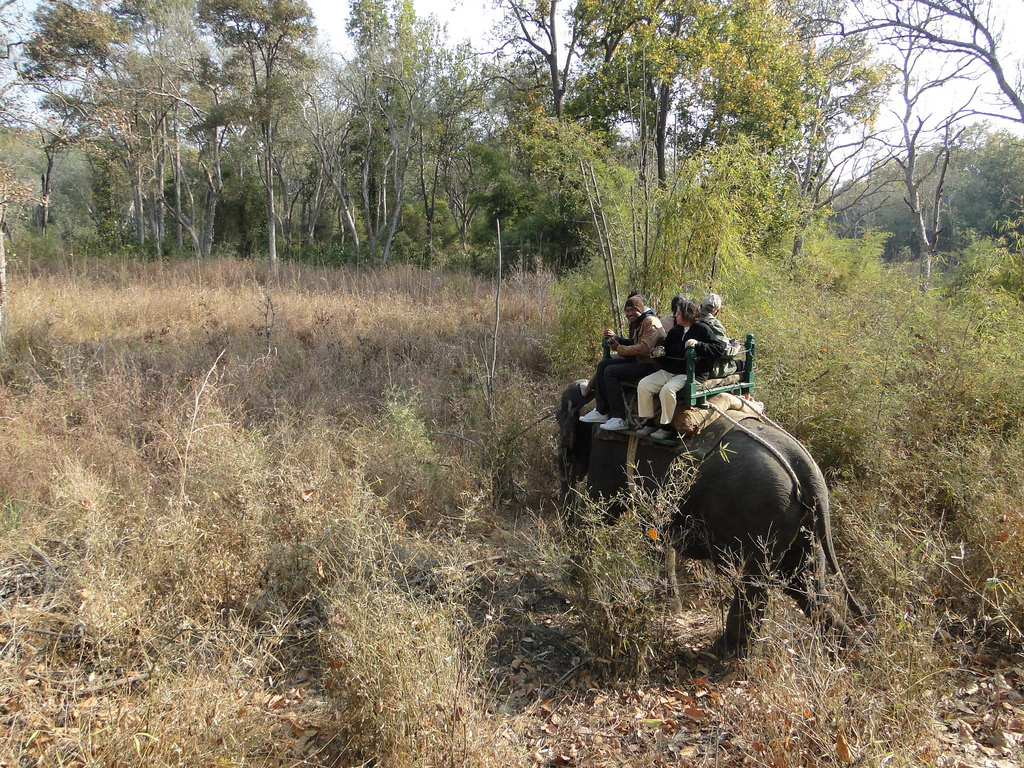A trip to Pench National Park
Do you know what that smell is?” the naturalist asks, as I wrinkle my nose in distaste during my trip to Pench National Park. “Tiger urine,” he grins. He watches my ‘omygod-show-me-where’ expression, shakes his head at my naivete and confesses, “Ok, it’s not. It’s the smell of the mahua flower.” Instead of disappointing me, it put me in good spirits. Where there is mahua, there is mahua liquor…. I went to Pench National Park with zero expectations. In fact, at the end of my three days, Pench did not live up to my expectations of a deathly-dull, dusty, one-tiger hellhole. On the contrary, it was everything a National Park should be. I write this piece with regret — I don’t want you to come and discover how absolutely wonderful Pench is. I want the place to myself. And here’s why. Imagine the beauty of Bandhavgarh without pesky tourists in their noisy, diesel spewing vehicles. Imagine a Park where you can spend five hours without meeting a single other vehicle. Imagine a Park where spotting a tiger is not difficult (and it’s not a god awful tiger show). Pench is all that and more. In Pench, one morning, I met Kankatti, the tigress with the cut ear. In the winter of 2004, a travel agent from Europe came to Pench on a recce.
The next morning, a tigress (Kankatti) was spotted and while watching it from atop an elephant, she fell off it and landed within a foot of the tigress. In front of the tigress was a kill (a cheetal, not the woman) she had stolen from a leopard (which was perched in a tree just above her). Eyewitnesses in Pench say Kankatti and the travel agent were equally shocked. But the cat fled, leaving the woman to nurse her dignity (she just hurt her back).
Six months later, when I saw Kankatti, I felt I knew her. She was heavily pregnant and lay in the shade below a rocky overhang; her white distended belly rose and fell rhythmically. She was beautiful, majestic and irrationally, I wished I was in the travel agent’s shoes, within touching distance of Kankatti. So, yes, I had seen a tiger. Mission accomplished. So satisfied was I with my day that I forgot about the other wildlife we had spotted that day in the jungle… the wild dogs, the collared scops owl, chameleon, jackal, hornbill… as my naturalist reminded me. I had dismissed everything else that I’d seen, heard, smelt — the entire jungle experience — for the sight of the tiger. Nothing mattered any more, now that I’d seen my tiger. I was missing out on tiny things that would’ve enriched my experience — funnel spiders, a tiny owlet, the flash of blue of a nightjar’s wings, butterflies swarming around the jeep’s yellow indicator lights thinking they’re flowers, a baby boar grunting after its mother, even the drops of cicada pee on your face (I thought they were dew drops). I listened to my naturalist about everything else that lives and breathes in the jungle and I know it was a lesson I’ll never forget. As a peace offering, he took me to Sepobai Bhalavi’s house for a drink. She’s from the Gond tribe, which distills the mahua flower into a potent spirit. I added some fizz to my drink and tossed it down… it was smooth, strong and decidedly smelly. But it’s recommended. Ah! Tiger pee! Gimme more, I say, gimme more. Want to know about the connection between Pench and the book Jungle Story, check out ixigo’s cool story.
The Park
In 1863, the first Inspector General of Forests (India), Dr Dietrich Brandis, toured this area and laid down policy for the forests. In 1929, it was declared a Reserve Forest, but hunting permits were available till 1970- 71. In fact, in 1949-50, 49 tigers were shot in the area according to local records. In 1977, realising the need to protect the tigers in the region, 449.39 sq km was notified as the Pench Wildlife Sanctuary. Then, in 1983, it was declared a National Park and in 1992, a Tiger Reserve. It became the 19th Reserve to be protected under the Project Tiger. The total area of the Pench National Park is 758 sq km, of which the core area is 292.85 sq km, while the buffer zone is 465 sq km. The terrain is undulating, with most of the area covered by small hills, steeply sloping on the sides.
The hills in the Park include Chindi Matta, Khumabdeo, Khariban Matta, Arjal Matta, Kalapahar. ‘Matta’ means hills in Gondi (the language of the Gond tribals of this area). Kalapahar is the highest of these at 2,130ft, while Jamtara and Ghumtara are the plateaus. It’s only in the last seven years that Pench National Park has actually opened up to tourists, though ironically, descriptions of its natural wealth and richness appear 400 years ago in the Ain-i-Akbari (Abul Fazal’s famed account of Akbar’s court). Descriptions of the natural beauty, the huge prey base, the many predators and the biodiversity of this area also appeared in numerous wildlife books dating back to the 17th century.
Some quick facts:
Location
On the southern boundary of Madhya Pradesh and is contiguous with the Pench NP in Maharashtra.
Distance
92 km NE of Nagpur
Route from Nagpur NH7 to Khawasa via Kamptee, Mansar, Deolapar and Manegaon; district road to Pench NP.
When to go
Early November to mid-March is the best weatherwise
Park closes from July-September. Go there simply for Tigers.
Wildlife/ Forest Dept offices: Field Director Pench NP Seoni, Madhya Pradesh Tel: +91-7692-223794, 220794 Pench Range Office STD codes Seoni 07692, Pench 07695.
By Kshitiz






